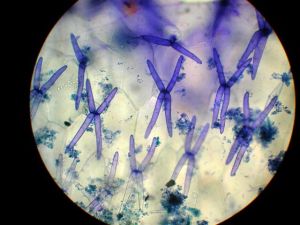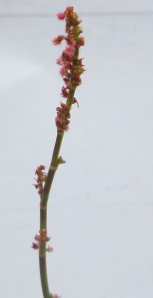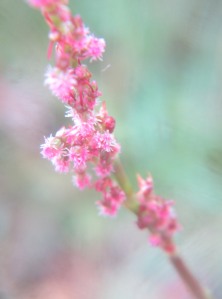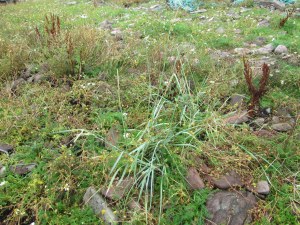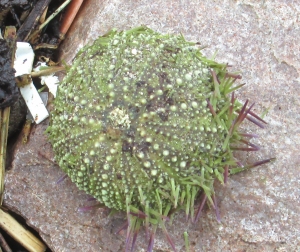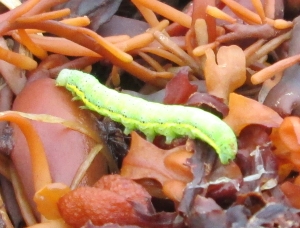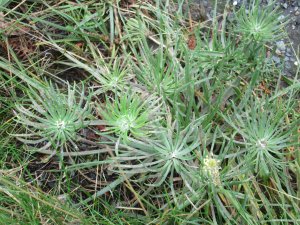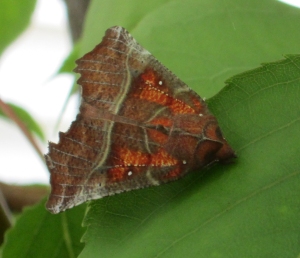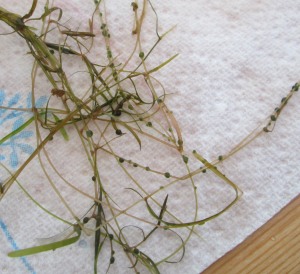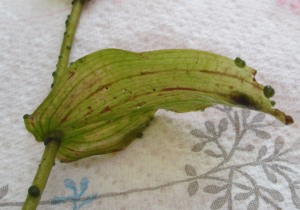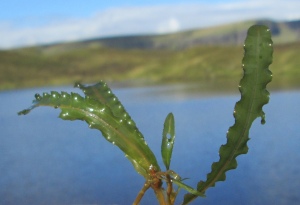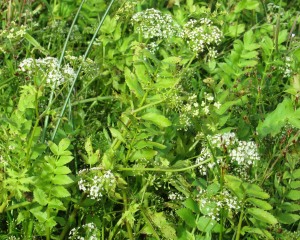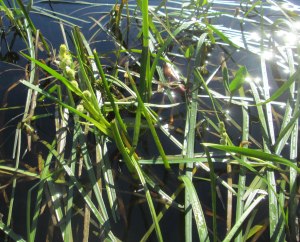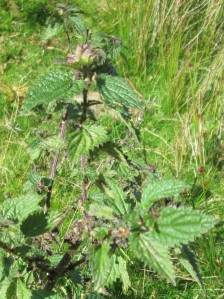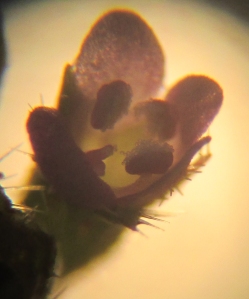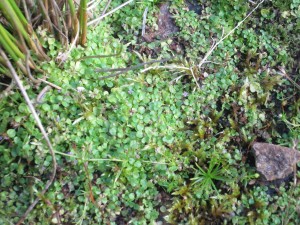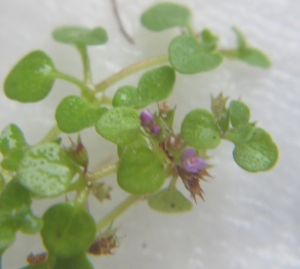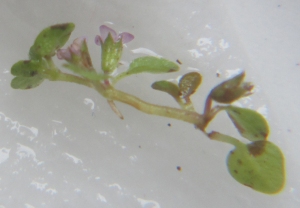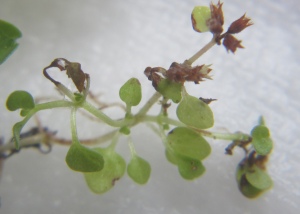Nick has sent a very useful list of plants from his land at Earlish. Most interesting were Mentha arvensis (Corn Mint) and Viola arvensis (Field Pansy), both featuring in the Rare Plants Register. It is almost embarrassing that the only two extant sites known to me for V. arvensis are in the gardens of the vascular plant Vice-county Recorder and the bryophyte VCR,
Coming back from the SBG walk Linda was”hissed at by a very fresh young Vipera berus! Slithered off into the seaweed at the top of the shore.” This looks like the first adder record for NG61 since before 2000.
At the meeting I gave Jean two micro-moths for Keith which I had found dead in the house. He says: “The large one is Brown House-moth Hofmannophila pseudospretella. The smaller one is a particularly small example of White-shouldered House-moth Endrosis sarcitrella.” Both of these are rather short of records in VC104 but as Keith says, “I’ve no reason to suspect that they would be uncommon here.”
Returning to yesterday’s aquatics, the large Sparganium looks very close to Sparganium emersum and I am sending it to Kay Fuhrmann in Germany for further examination. It would be amusing if I have found it a few days after my saying in effect that I didn’t believe it to be here.
Curiously, when the 1989 NCC Freshwater Lochs Survey visited Loch Dubhar-sgoth they recorded no Potamogetons at all. I feel this must have been a transcription error from the original data as some had been recorded there before their visit and there is no shortage now. The loch seems unlikely to have undergone significant change in the intervening years. It turns out that P. berchtoldii was a first for NG46 as indeed were Dactylorhiza incarnata (Early Marsh-orchid) which was still determinable to the species if not the subspecies in a Schoenus flush, Eriophorum latifolium (Broad-leaved Cottongrass) which was also in a Schoenus flush and Gnaphalium uliginosum (Marsh Cudweed) in its usual roadside/ruderal habitat.
